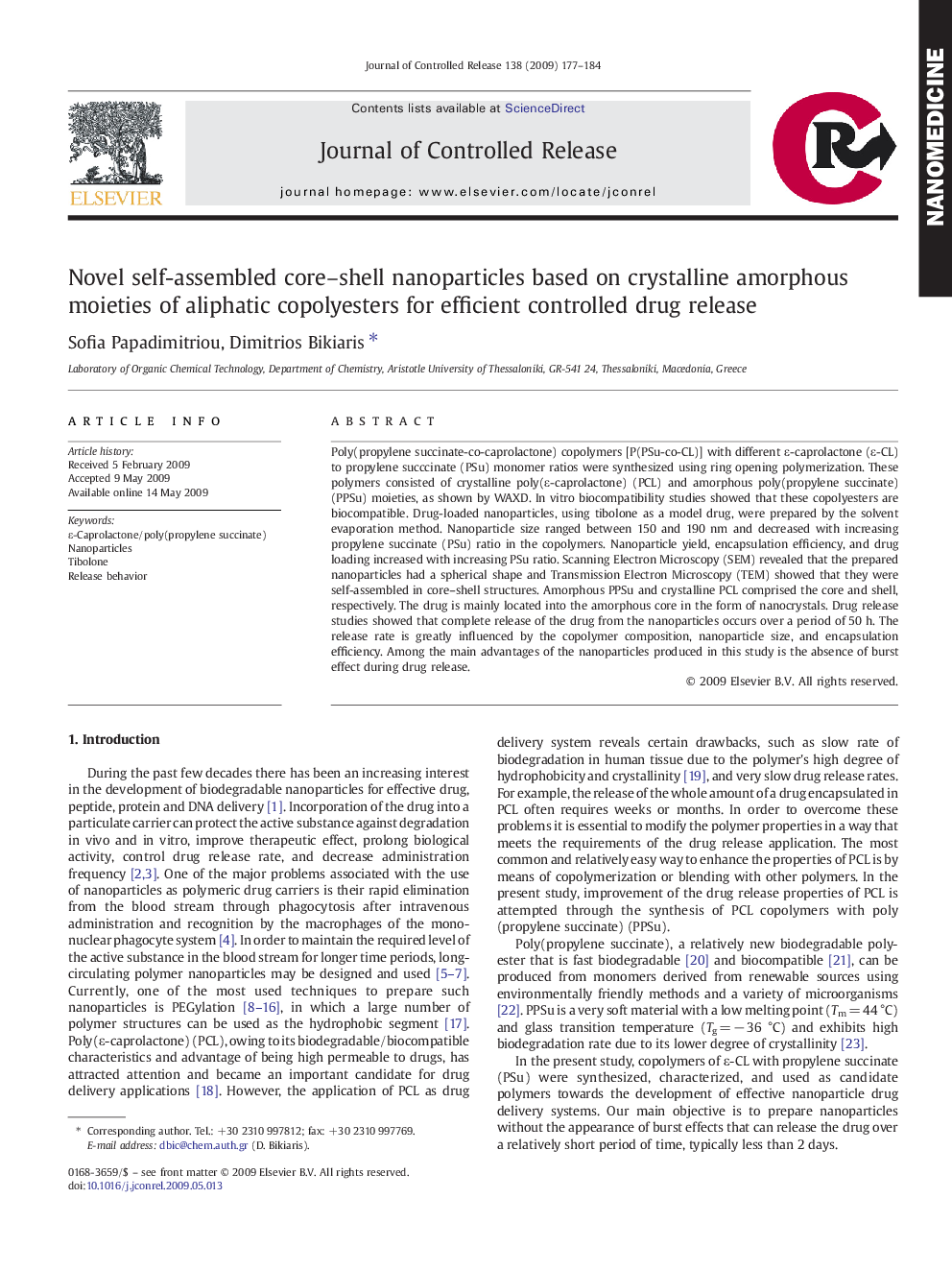| کد مقاله | کد نشریه | سال انتشار | مقاله انگلیسی | نسخه تمام متن |
|---|---|---|---|---|
| 1426278 | 986803 | 2009 | 8 صفحه PDF | دانلود رایگان |

Poly(propylene succinate-co-caprolactone) copolymers [P(PSu-co-CL)] with different ε-caprolactone (ε-CL) to propylene succcinate (PSu) monomer ratios were synthesized using ring opening polymerization. These polymers consisted of crystalline poly(ε-caprolactone) (PCL) and amorphous poly(propylene succinate) (PPSu) moieties, as shown by WAXD. In vitro biocompatibility studies showed that these copolyesters are biocompatible. Drug-loaded nanoparticles, using tibolone as a model drug, were prepared by the solvent evaporation method. Nanoparticle size ranged between 150 and 190 nm and decreased with increasing propylene succinate (PSu) ratio in the copolymers. Nanoparticle yield, encapsulation efficiency, and drug loading increased with increasing PSu ratio. Scanning Electron Microscopy (SEM) revealed that the prepared nanoparticles had a spherical shape and Transmission Electron Microscopy (TEM) showed that they were self-assembled in core–shell structures. Amorphous PPSu and crystalline PCL comprised the core and shell, respectively. The drug is mainly located into the amorphous core in the form of nanocrystals. Drug release studies showed that complete release of the drug from the nanoparticles occurs over a period of 50 h. The release rate is greatly influenced by the copolymer composition, nanoparticle size, and encapsulation efficiency. Among the main advantages of the nanoparticles produced in this study is the absence of burst effect during drug release.
In the present study self-assembled core–shell nanoparticles based on crystalline PCL (shell) and amorphous poly(propylene succinate) (core) were prepared. Tibolone release rate from these nanoparticles is greatly influenced by the copolymer composition.Figure optionsDownload as PowerPoint slide
Journal: Journal of Controlled Release - Volume 138, Issue 2, 1 September 2009, Pages 177–184